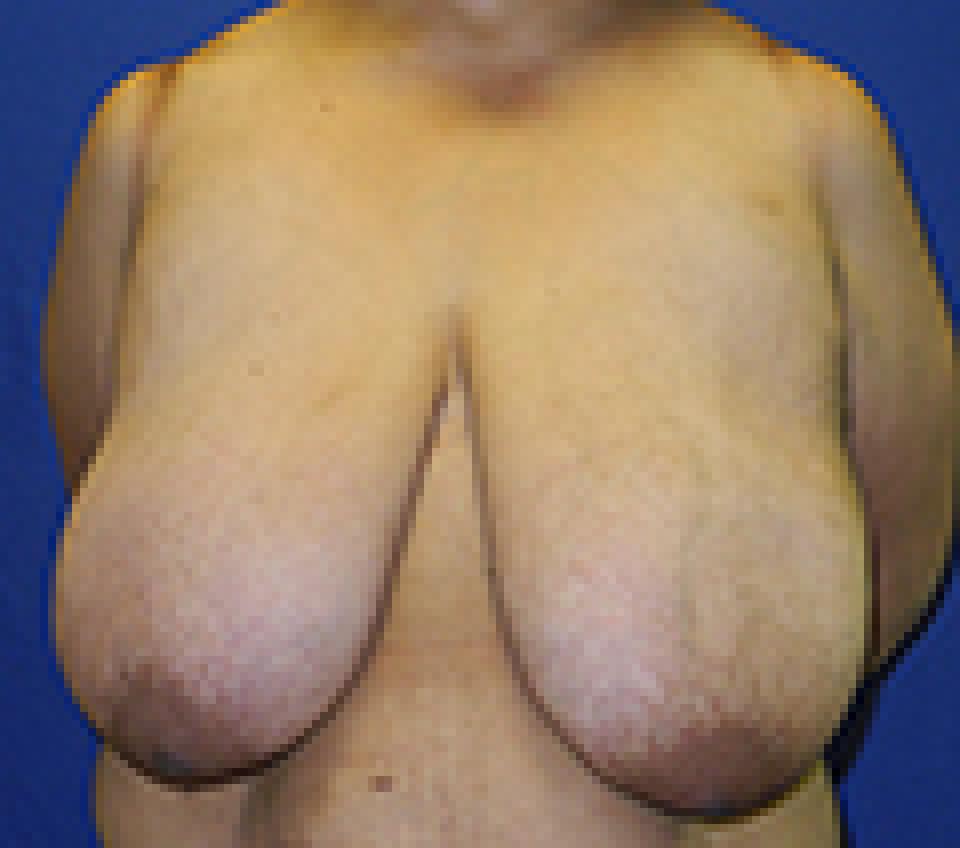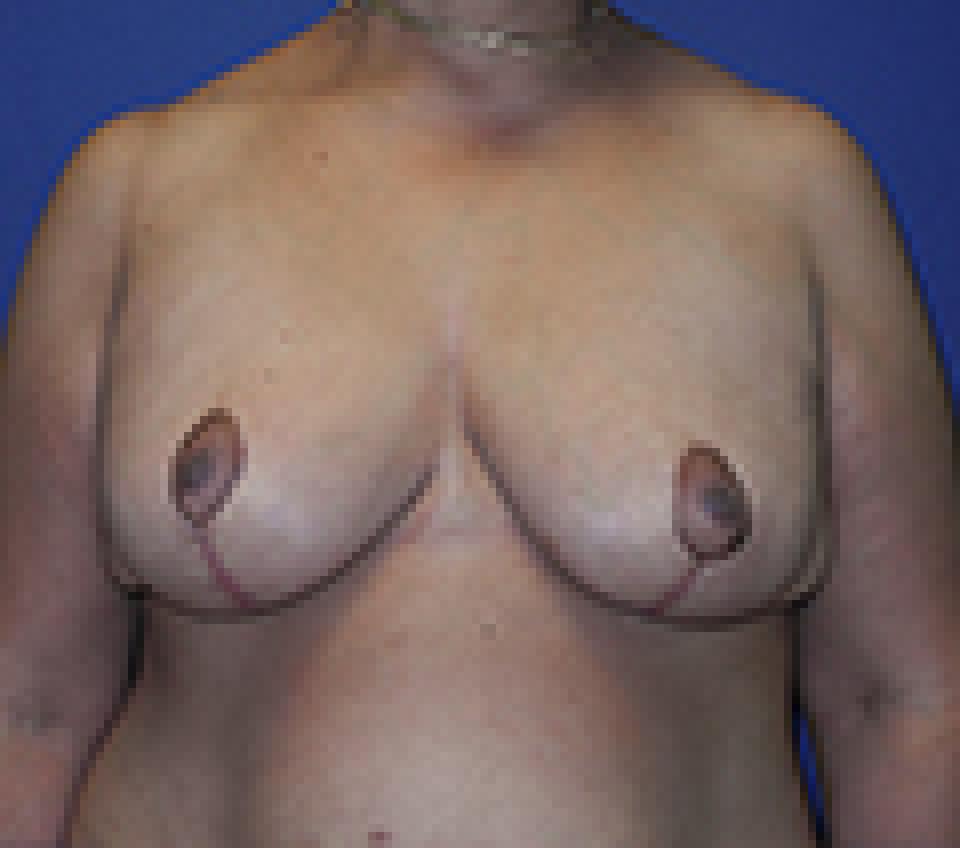Areola
The word is derived from the Latin for a courtyard, or little open space, and was first used in 1605 by Bauhin applied to the colored area around the nipple of the breast.
The areola is a specialized circular area of skin centered on the nipple, distinguished by its color and protruding mouths of glands. It varies greatly in size, the smallest being in the male, about one inch across, and the largest in very large breasts when the areolae may have a four inch diameter.
The epidermis (outer layer) of the areola is pigmented; two pigments are known, the brown eumelanin and the red pheomelanin. In general the virgin “white” breast has pink areolae, and the virgin “black” breast has dark areolae. Both are likely to darken in pregnancy, but this is by no means a sure test for virginity, many females of very light complexion continue with pink areolae after childbirth.
Areolar glands of Montgomery are a cross between sweat glands and mammary glands; their mouths form little hillocks in the areolae, and in the lactating breast exude a greasy substance which is protective to the skin. At the margins of the areolae the glands are more distinctly of the “sweat” character, and there may be hair bearing follicles.
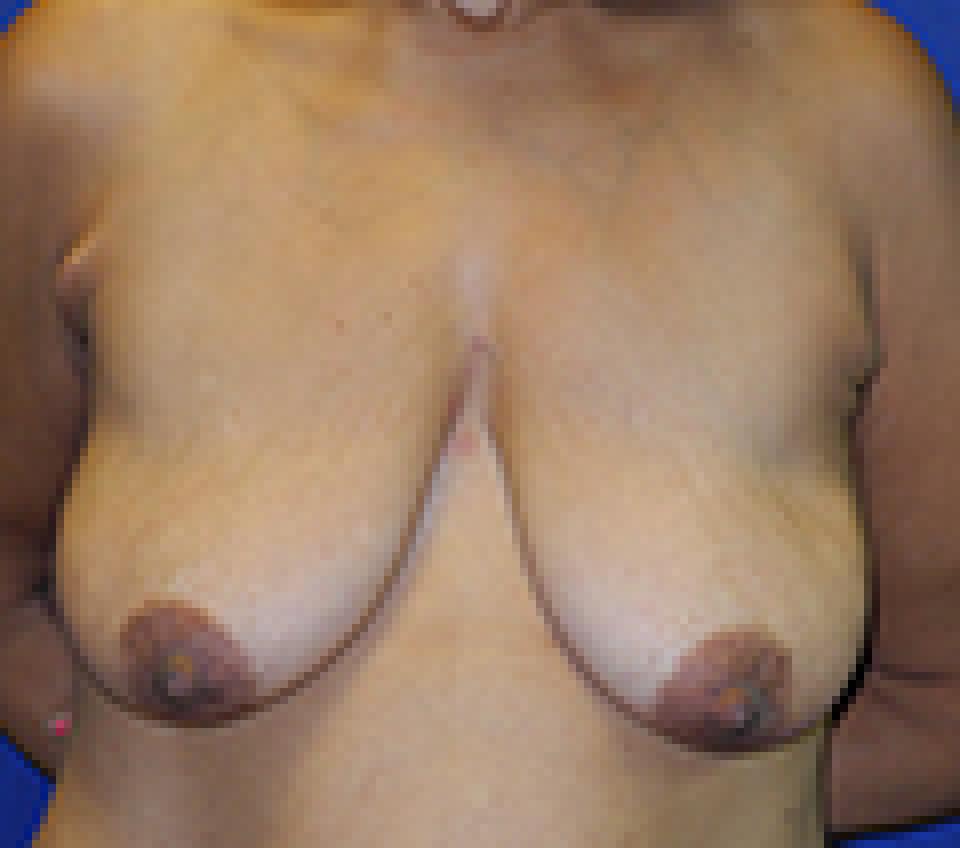 before
before
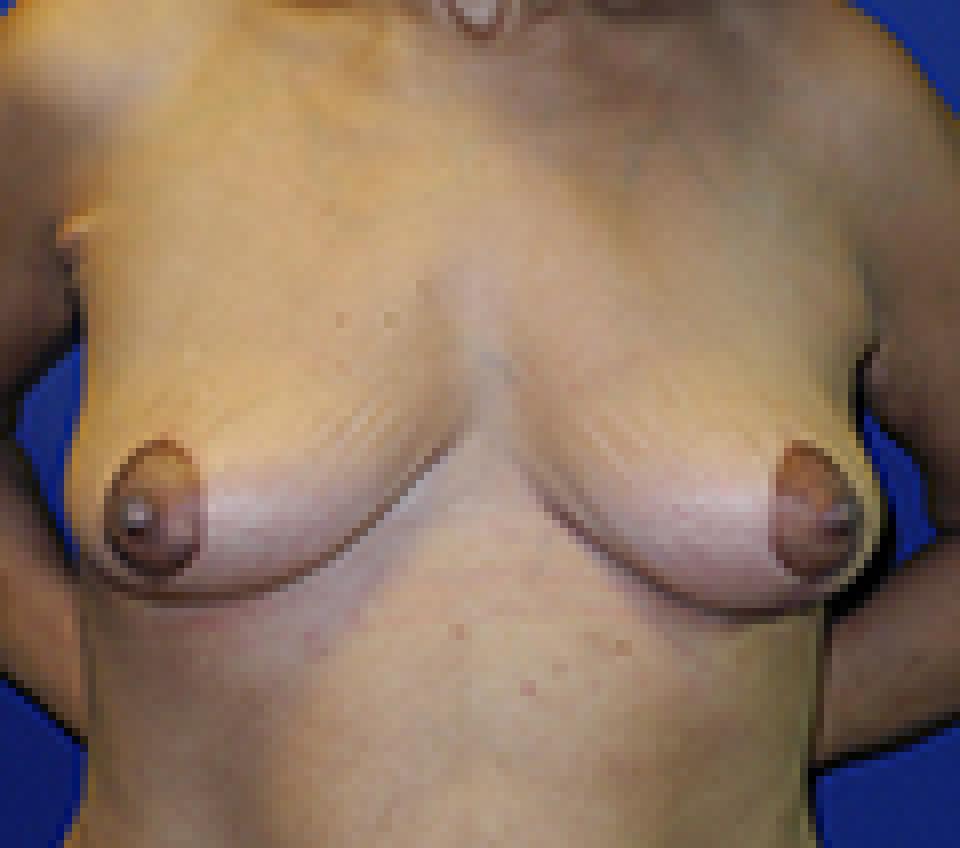 after
after
This 49 year old woman reached her plateau weight after losing 100 pounds following bariatric surgery. She is an excellent example of an individual whose breast tissue had been largely replaced with fat and as such, after massive weight loss, there was not enough breast tissue remaining to rearrange into a new breast shape that appeared typical of what one might expect after a breast lift or mastopexy.
From an aesthetic standpoint, this woman informed me that she would be satisfied with any improvement in her breast shape. Her primary goal, however, was to remove the extra skin that otherwise laid across her abdomen unless she wore an underwire bra. Her skin had lost a great deal of its elasticity and was unlikely to tolerate insertion of an implant to replace lost volume without sagging or becoming ptotic in a relatively short period of time. The use of commercially available skin substitutes, which would have allowed use of an implant, was not an option for her.
Her post surgical photographs show her result after I performed a breast lift or mastopexy using a short scar technique that leaves behind scars in the shape of a “lollipop.”
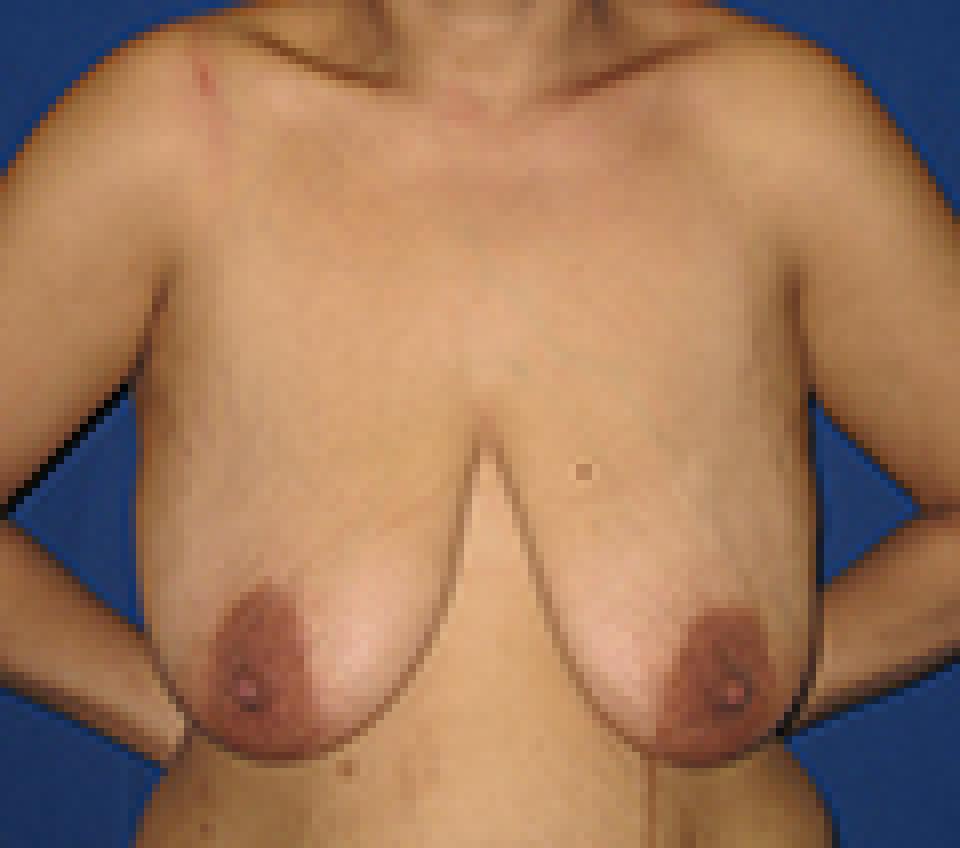 before
before
 after
after
This 26 year old woman reached her plateau weight after losing 74 pounds following bariatric surgery. She had a breast lift or mastopexy using a technique which leaves behind scars in the shape of an “anchor.”
In some patients who lose a large amount of weight, the natural end point of the breast laterally disappears and the breast appears to continue around towards the back. This is what has happened to this woman.
In selected individuals who have this problem, the “anchor” scar type breast lift can be amended to remove that skin excess on the side of the body beneath the arm. This is the reason that I selected that particular breast lift technique in this woman even though the scars that it leaves behind are longer and more difficult to conceal in a swimsuit.
Looking at her photographs after surgery, it is obvious that there is no longer a "wing" of skin that continues laterally towards the back. Instead, the breast has a round shape and ends as it typically does before the side of the body that lies beneath the arm.
Unfortunately, there is now a visible scar there. This is an example of what I refer to as a “trade off” in plastic surgery. It is important to decide what is more important to each individual patient- a scar or better contour. Sometimes, it is not possible to have both!
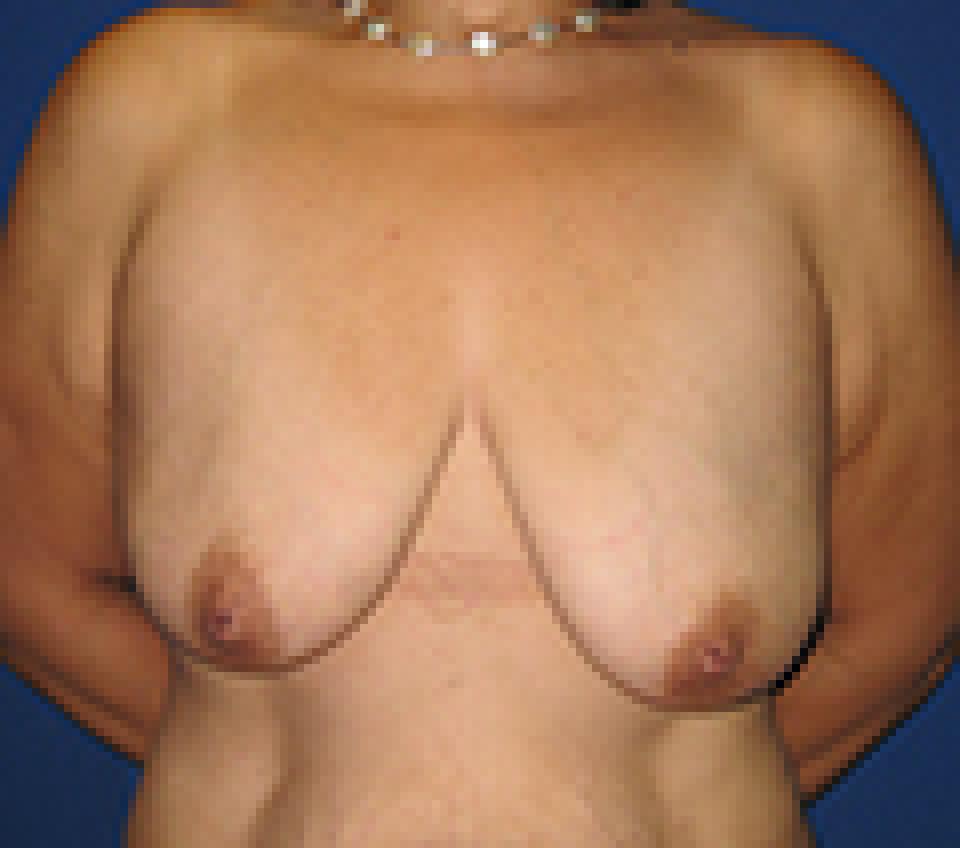 before
before
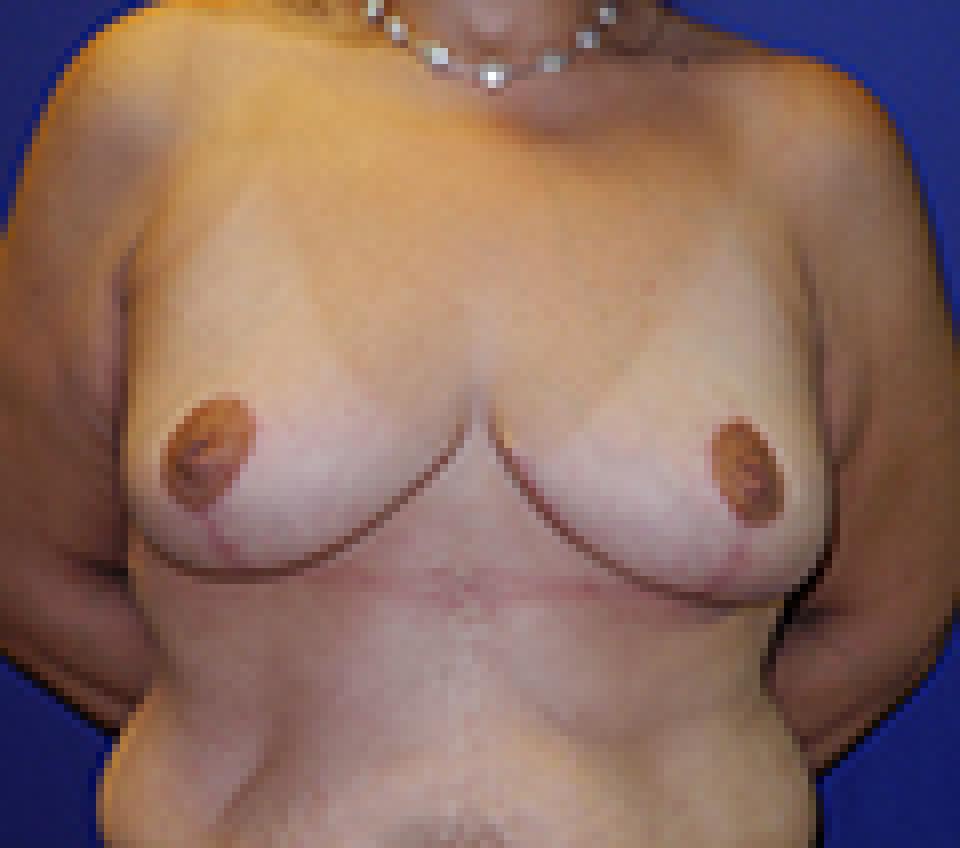 after
after
This 37 year old woman reached her plateau weight after losing 91 pounds following bariatric surgery. She had a breast lift or mastopexy using a technique which leaves behind scars in the shape of an “anchor.”
A breast lift or mastopexy is an operation which rearranges breast tissue so that the new breast shape is typically shorter and rounder. Unfortunately, patients who have lost a large amount of weight often do not have enough breast tissue remaining to rearrange into a naturally appearing breast. This woman was fortunate to have enough breast tissue after a 90 pound weight loss to achieve the breast shape that is visible in her post surgery photographs.
While an implant can provide the volume that is lacking after massive weight loss, the weight of the implant can also be very taxing on compromised skin, such as that which is typical after massive weight loss. Commercially available skin substitutes can provide the strength needed for successful use of implants in such cases.
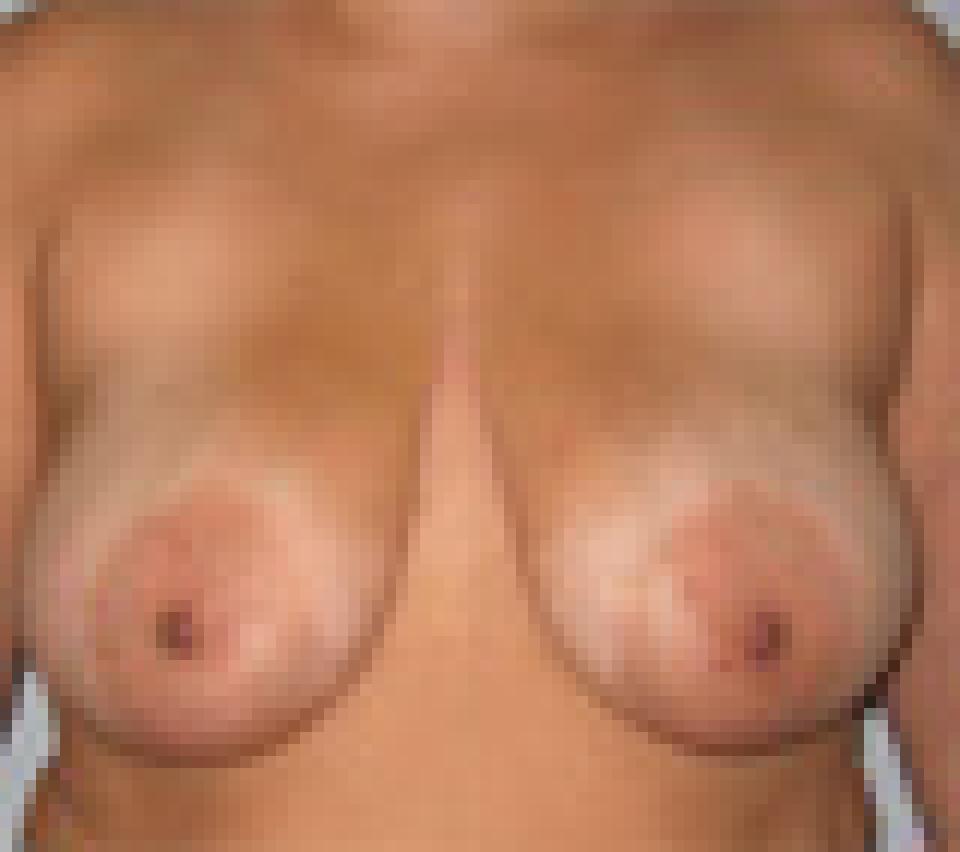 before
before
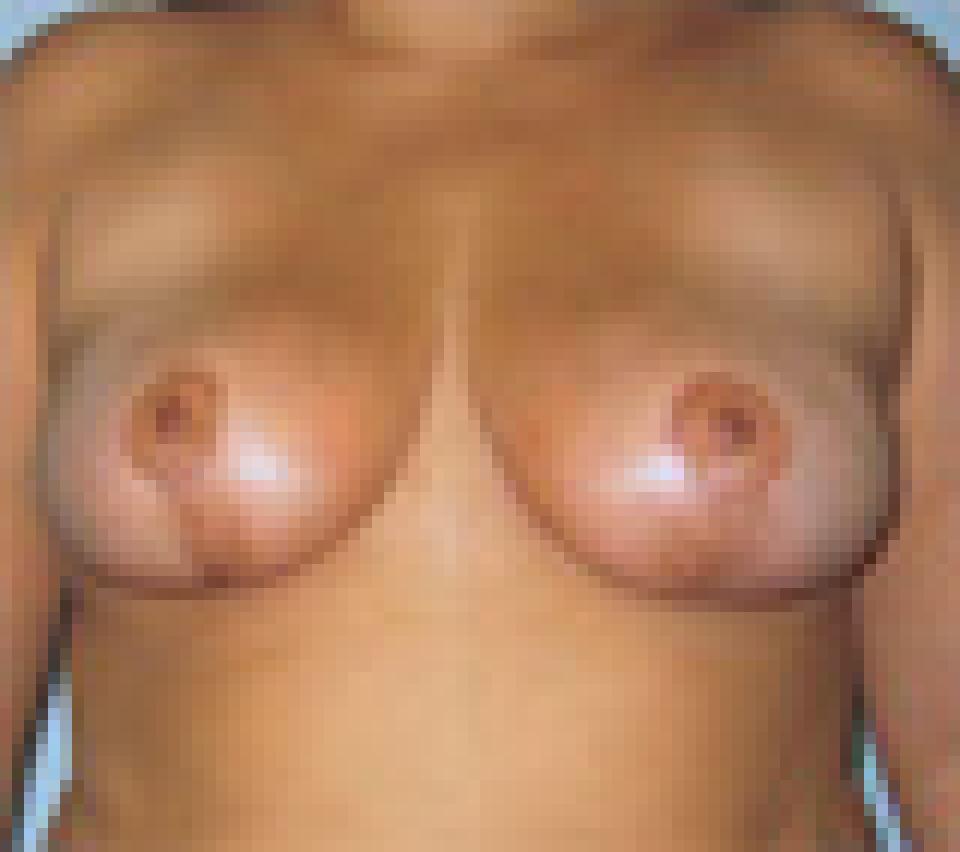 after
after
This case depicts a 41 year old woman who wished to have slightly smaller and shapelier breasts. She underwent breast reduction using an inverted T or "anchor" incision pattern.
Her post-operative photographs depict her appearance approximately two months after surgery.
With optimal design before surgery, the portion of this incision that runs along the fold of the breast is nearly completely hidden. Reduction of the areolar size for balance and proportion is an additional advantage of this procedure.
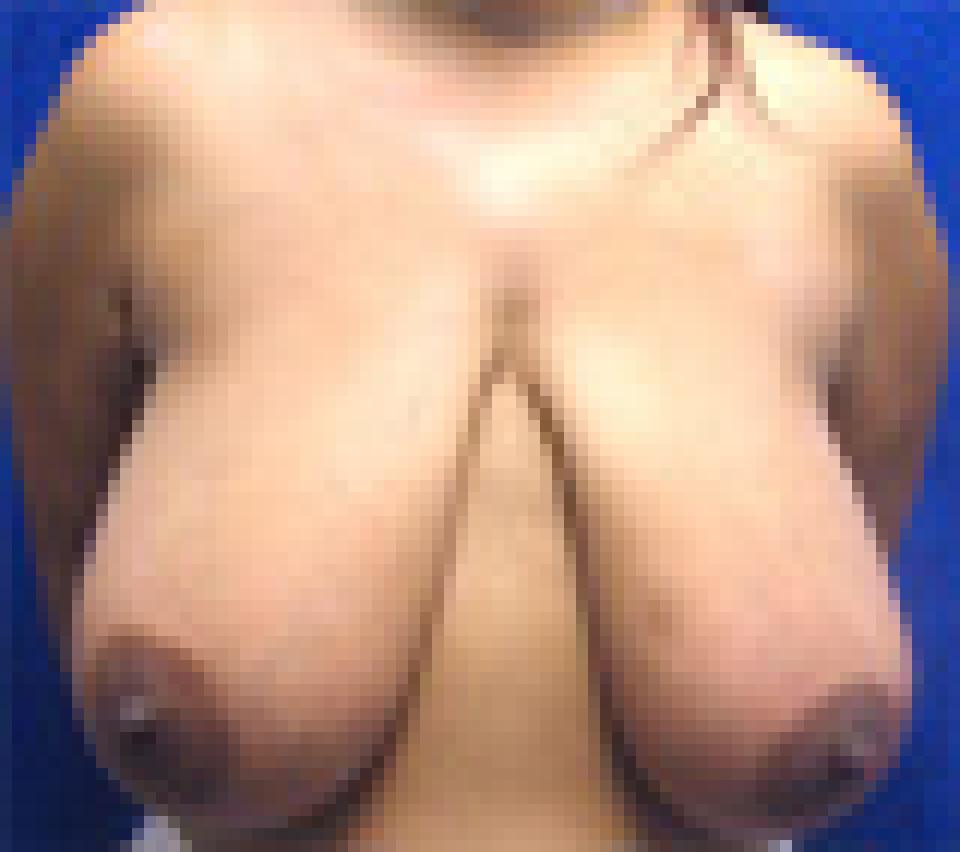 before
before
 after
after
This case depicts a 29 year old woman with symptomatic breast hypertrophy who underwent a breast reduction using the inverted T or "anchor" incision pattern. Because of this individual's symptoms, medical insurance covered a portion of the costs of this procedure.
Not only did her symptoms improve following surgery, but she also gained a more aesthetically proportionate breast. Her post-operative photographs show her appearance approximately one month after surgery.
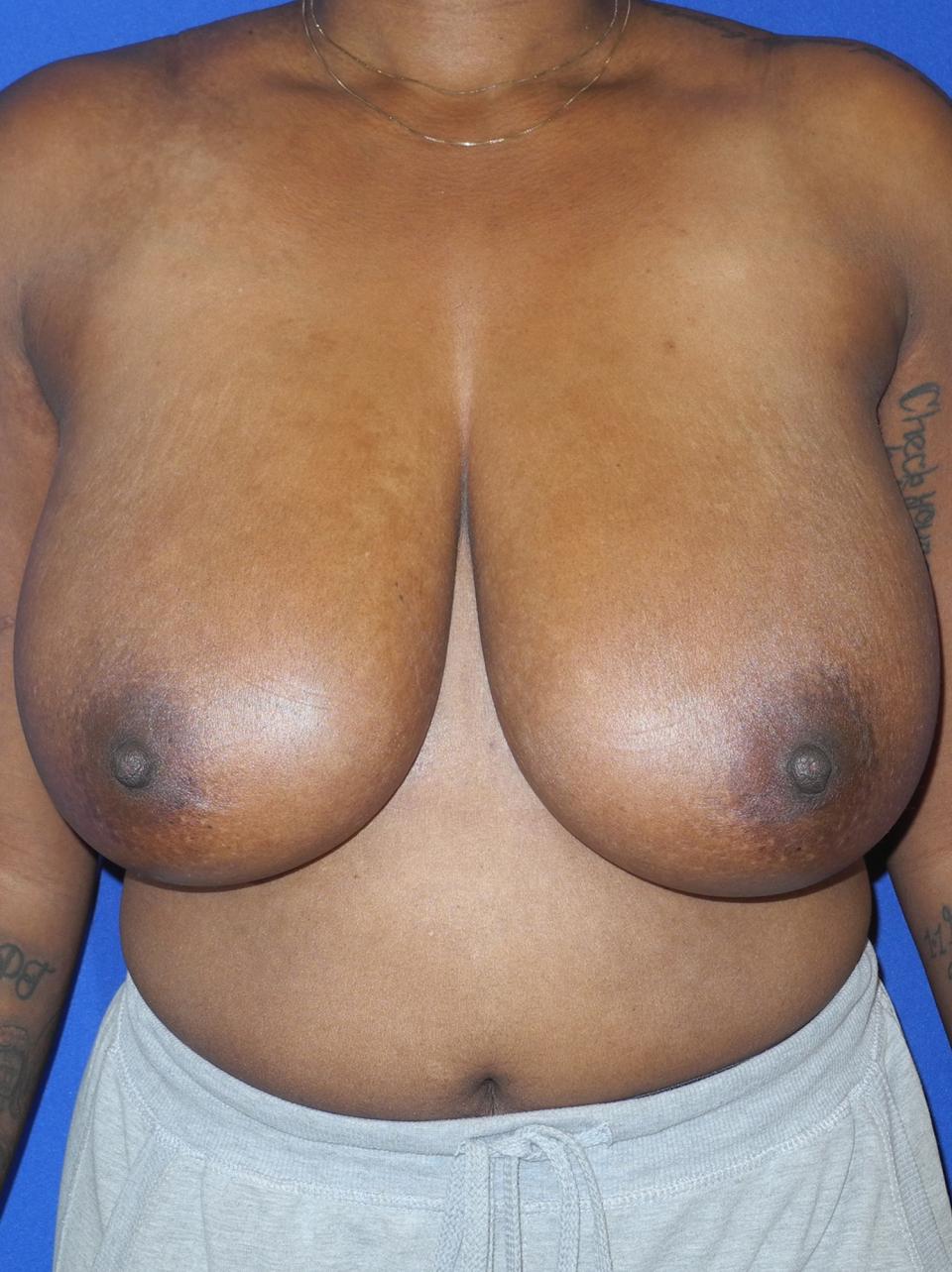 before
before
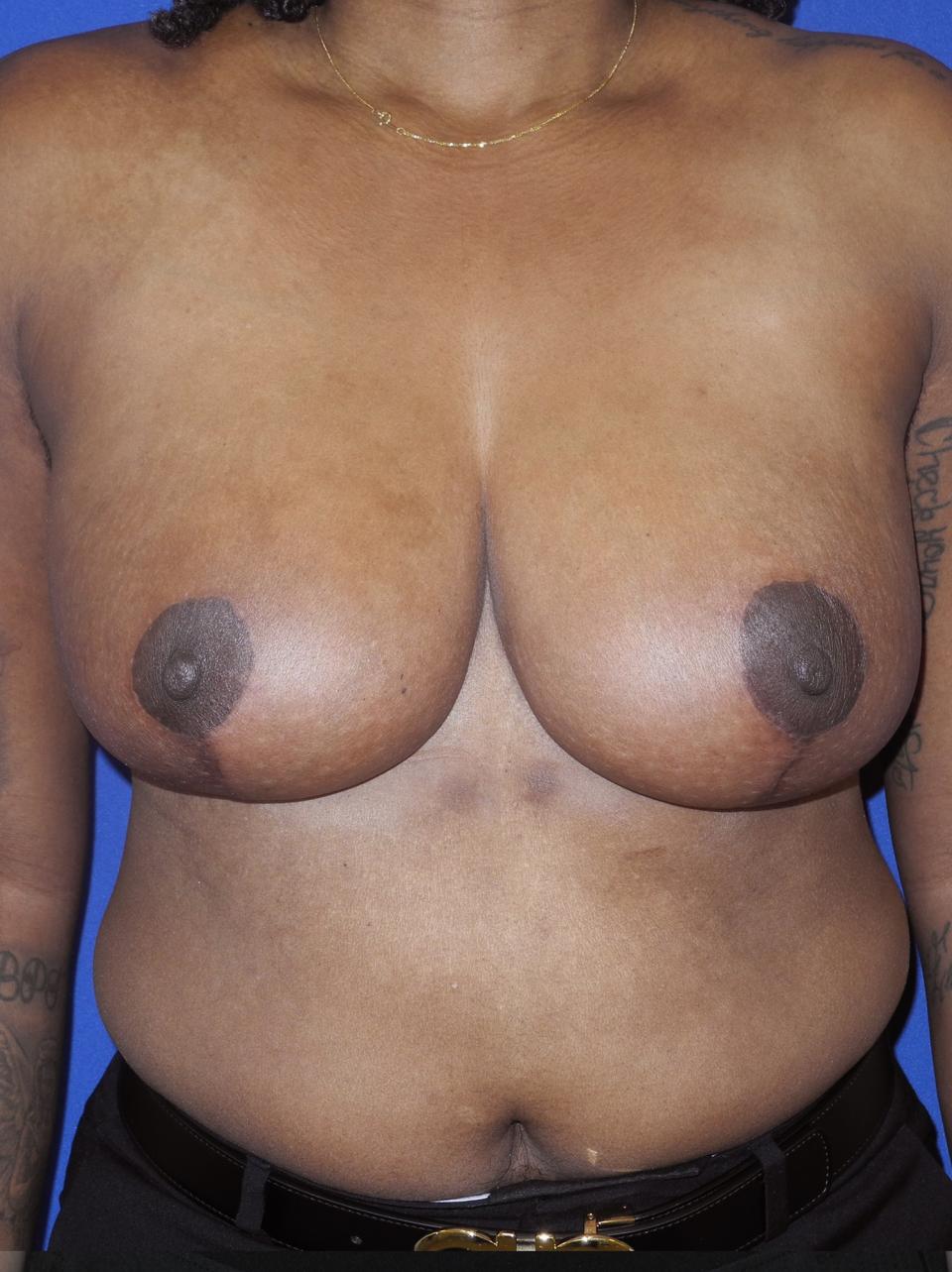 after
after
This individual suffered from gigantomastia and underwent a breast reduction in which almost three and a quarter pounds of weight was removed from the breasts.
The breast reduction was performed in a manner that so that the breasts were shortened in length and lifted. This photograph was taken at approximately four months following surgery. No liposuction was performed in this procedure.
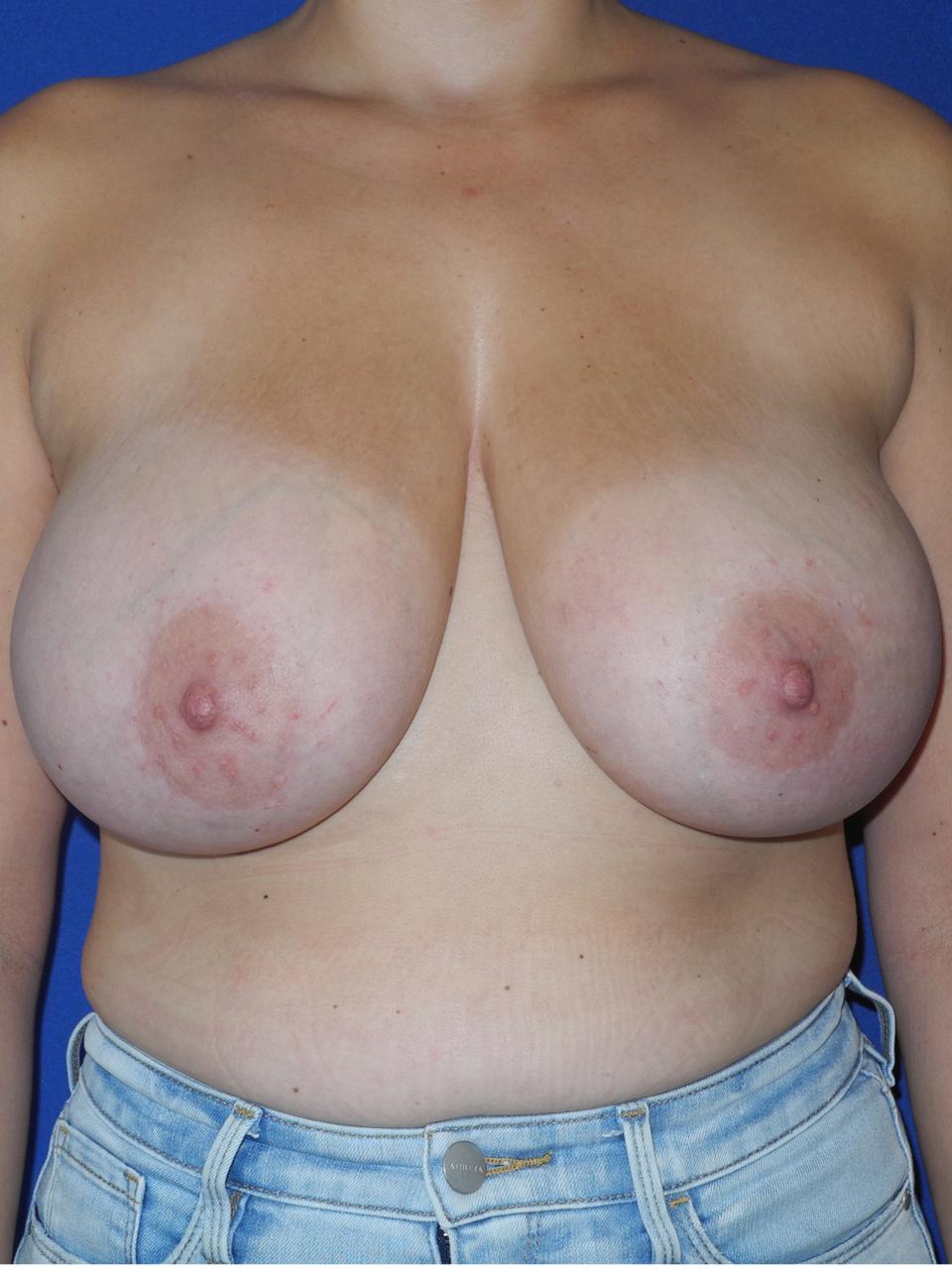 before
before
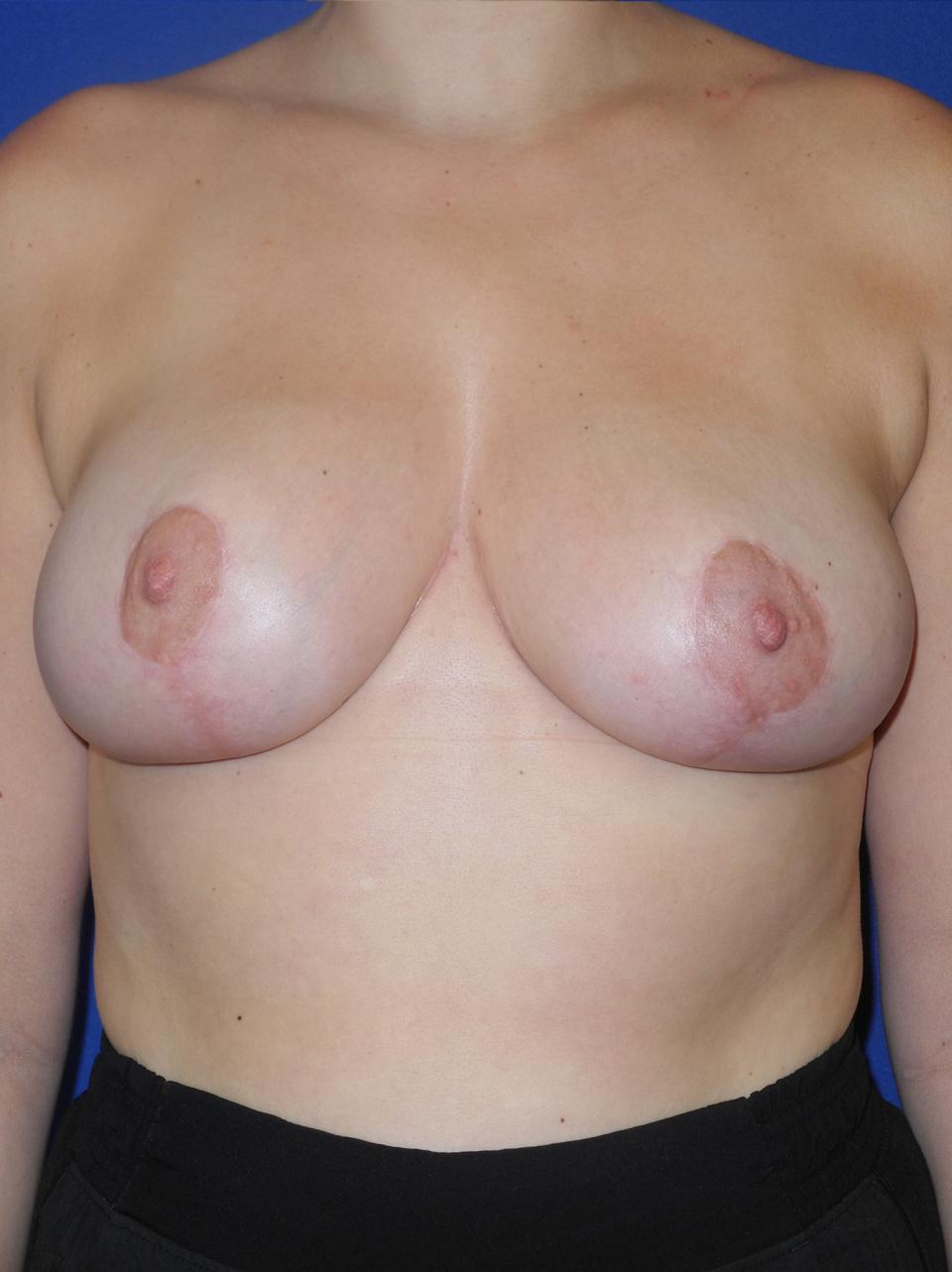 after
after
This individual underwent a breast reduction in which almost two and a quarter pounds of weight was removed from the breasts. The breasts were shortened in length and lifted to give a rounder appearance. This photograph was taken at approximately four months following surgery.
Liposuction of the tissue that lies between the upper outer quadrant of the breast and the upper arm as well as the side of the body directly beneath the arm pit area can decrease bra band size and give the breast a narrower appearance after surgery.
 before
before
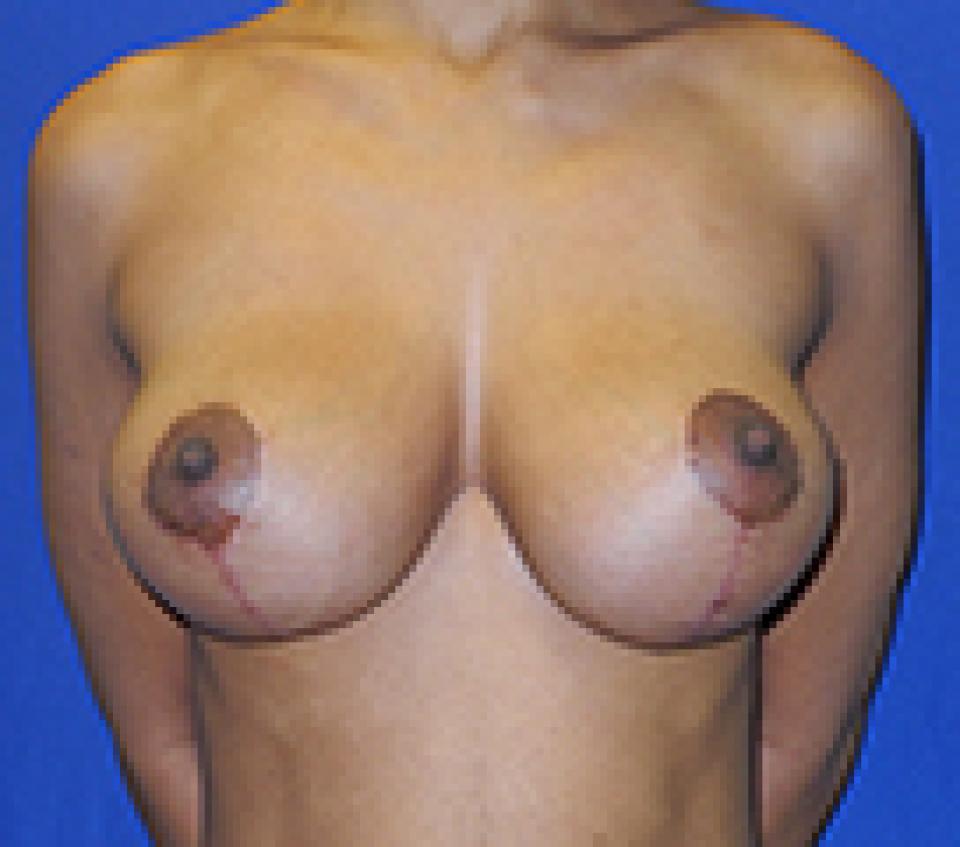 after
after
This 24 year old woman had a breast lift or mastopexy to correct sagging of her breasts that occurred as a result of changes related to pregnancy. I used a short scar breast lift or mastopexy technique which leaves behind scars shaped like a “lollipop.” Some breast lifts or mastopexies are performed using a technique that results in scars that look like an “anchor,” but I prefer to use this shorter scar technique because scars are never visible in the cleavage nor on the side of the body beneath the arm. This makes swimsuit selection much easier.
How the breasts will change as a result of pregnancy varies from one woman to the next. Some women’s breasts look very similar after pregnancy. Others change drastically in their appearance after even a single pregnancy.
This woman was fortunate to have enough breast tissue to rearrange into a relatively full and natural appearing breast without the need for an implant.
Skin elasticity, which refers to the ability of skin to “snap back” after being stretched, also varies from one woman to the next. In people who have poor elasticity, surgical results do not last as long. In such people, using an implant to replace volume can predispose that individual to an earlier recurrence of the initial problem because the implant has weight and taxes already compromised skin. Commercially available skin substitutes can provide the strength needed for successful use of implants in such cases. Use of such substitutes adds expense and complexity to the surgery, however.
 before
before
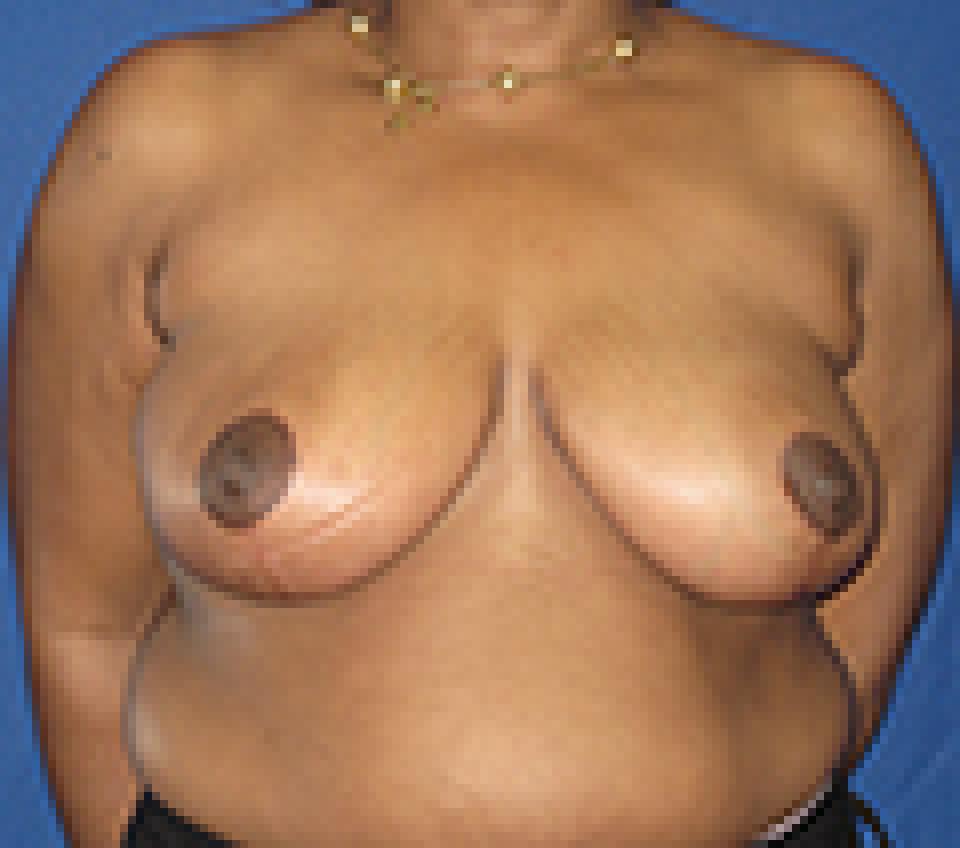 after
after
This 39 year old woman underwent breast reduction in which approximately one and a half pounds of tissue was removed from each breast.
I view breast reduction as a two part process: first, tissue is removed to decrease the size and weight of the breasts; second, the remaining tissue is rearranged to create a new breast that has an aesthetically appropriate appearance. This rearranging process is very similar to what is done in a breast lift.
In this individual’s case, the incisions used to perform the breast reduction were of the “anchor” type and the incisions healed well.
Questions Related to Areola
Dr. Belsley's Philosophy of Breast Augmentation
When it comes to deciding what approximate breast size you wish to achieve, the best advice I can give you is that you should be guided by your physical frame. Indeed, you may in fact be limited by it. In my practice, I select implants based upon your chest measurements, the quality of your breast skin and the size of your breasts prior to surgery.
I perform breast augmentation through a peri-areolar or inframammary approach and I place that vast majority of implants at least partially beneath the pectoralis muscle. My patients are welcome to select either saline or silicone filled breast implants. Silicone filled implants can in some cases achieve a more natural feel and may be a particularly attractive option for women with less breast tissue prior to surgery.
More >>Breast Reduction Ideals
Once I have removed enough tissue to achieve an appropriate breast size, the nipple and areola are repositioned, which means that the new, smaller breast also has a “lifted” appearance. While this is not the primary goal of this procedure, it is a fantastic secondary benefit of it. I strive to achieve the same aesthetic standards when I perform medically necessary breast reduction as I do for cosmetic breast lift or mastopexy. Since stretching of the areola is a common problem in patients with very large breasts, I typically reduce the size of the areola during breast reduction.
More >>Dr. Belsley's Philosophy of Breast Lift (Mastopexy)
In my practice, I perform breast lifts using incisions that result in a “lollipop” shaped scars. With good care and a bit of luck, these incisions heal well and the scars are difficult to see from a distance. Nevertheless, a woman who undergoes a cosmetic breast lift must be prepared for scars that are visible. This is one example of a “trade-off” in plastic surgery and of course, there are many others. This is one, however, that I feel is more than worthwhile in appropriate candidates.
More >>Dr. Belsley's Philosophy of Breast Revision
I apply the same criteria to patients who have had their surgery elsewhere as I do to my own patients. I am typically reluctant to re-operate on a breast augmentation patient for minor issues, because each time one undergoes revision, many of the risks of surgery tend to be multiplied. This is why I spend a great deal of time discussing size preferences and the likely outcome of surgery with my patients pre-operatively. It is said frequently that the most common reason for re-operation of the breasts in women who have had breast augmentation surgery is that they wish to “go bigger.” Ultimately, I feel that this is a poor reason to undergo repeated surgical procedures that can only result in more scar tissue, which is unpredictable, and thinning of the native tissues, which are necessary to cover the implant and provide a natural looking result. I encourage patients to think carefully about the risks of revision in cases where there is not a major problem.
More >>Dr. Belsley's Philosophy of Male Breast Reduction
Treatment for gynecomastia can be approached in several ways and is largely dependent upon the “type” of tissue in the chest that needs to be reduced. A physical examination is necessary to create a plan for treatment. Most of the time, I treat these individuals with a combination of ultrasonic liposuction and removal of glandular and breast tissue through a small incision on the border of the areola. Some individuals will be able to achieve excellent results with ultrasonic liposuction alone. Others, may require more extensive incisions. My goal is to give you a natural looking masculine shape that is well proportioned with the rest of your body using the shortest incision possible.
More >>